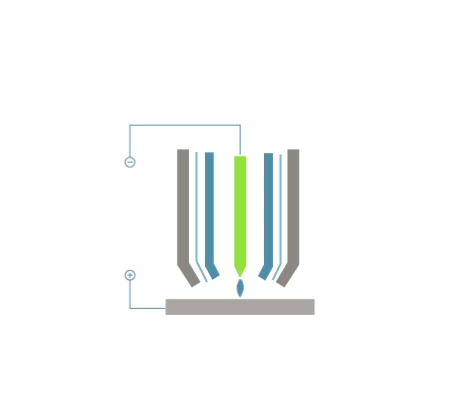Plasma arc machining is a machining process that uses the thermal energy of a concentrated plasma jet on a small area of the workpiece to heat it to its melting point, melt it and blast the metal out of the cutting gap.
In addition to subtractive manufacturing, plasma arc machining enables welding, spraying and overlaying welding.
Plasma welding uses the phenomenon of gas ionisation (by heating it to a sufficiently high temperature), and an arc is formed between a non-consumable tungsten electrode and the base material.
In the plasma overlaying welding process, an additional material in the form of a powder, rod or wire is molten in a very high-temperature plasma arc, which, together with the partially molten substrate metal, forms the build-up weld.
The process of plasma spraying involves melting an additive material in the form of a powder, rod or wire in a plasma arc and ejecting a stream of plasma gas that melts the particles of the additive material in it onto the surface of the workpiece being sprayed.

